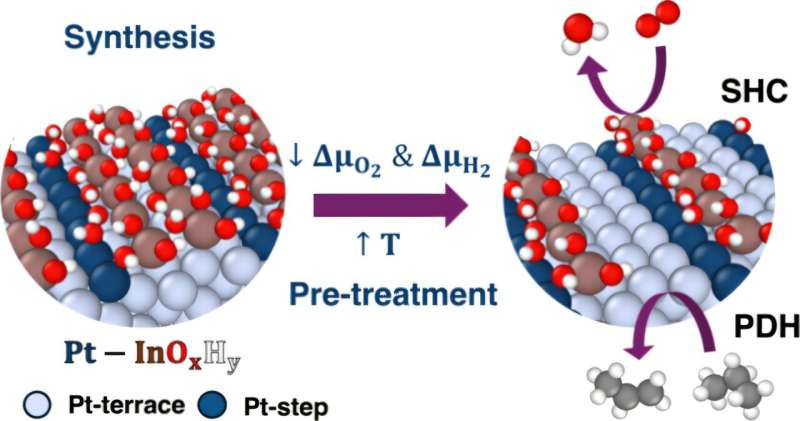Science
Algorithms Unlock Complex Chemistry of Propane to Propylene

Numerous everyday products, such as plastic containers and outdoor furniture, trace their origins back to a critical transformation: converting propane into propylene. Recent advancements from researchers at the University of Rochester have shed light on this complex chemical process by developing algorithms that reveal the atomic dynamics involved in this conversion. Their study was published in the Journal of the American Chemical Society on November 13, 2025.
In 2021, a significant study demonstrated a method for using tandem nanoscale catalysts to merge multiple steps of the propane-to-propylene transformation into a single reaction. This innovative approach promises to enhance yield and reduce costs for companies. However, understanding the atomic-level interactions remained elusive, which limited the application of this technique across other industrial processes.
The research team, led by Siddharth Deshpande, an assistant professor in the Department of Chemical and Sustainability Engineering, utilized advanced algorithms to explore the intricate reactions involved. “There are so many different possibilities of what’s happening at the catalytic active sites, so we need an algorithmic approach to very easily yet logically screen through the large amount of possibilities that exist and focus on the most important ones,” Deshpande explained.
Through their analysis, Deshpande and Ph.D. student Snehitha Srirangam discovered unexpected insights regarding the role of oxide in the reaction. They found that the oxide exhibited a preference for growing around defective metal sites, which proved vital for the stability of the catalyst. Interestingly, despite the oxide’s ability to exist in various chemical compositions, it consistently maintained its functional relationship with these defective sites.
Deshpande emphasized the broader implications of their findings. He noted that the team’s algorithmic methods could be applied to better understand other chemical reactions, such as methanol synthesis, which is essential for producing a wide range of products, from paints to fuel cells. This understanding could ultimately lead to more efficient production strategies for propylene and other industrial materials, moving beyond traditional trial-and-error approaches that have dominated the field for decades.
“Our approach is very general and can open the doors to understanding many of these processes that have remained an enigma for decades,” Deshpande stated. “We know these processes work, and we produce tons of these chemicals, but we have much to learn about why exactly they’re working.”
The research marks a significant step forward in chemical engineering, with the potential to reshape production methods in industries reliant on propylene and similar compounds. As the team continues to refine their algorithms and insights, the future of efficient chemical manufacturing may become clearer, paving the way for innovations that could benefit both industry and consumers alike.
-

 Science4 weeks ago
Science4 weeks agoIROS 2025 to Showcase Cutting-Edge Robotics Innovations in China
-

 Lifestyle4 weeks ago
Lifestyle4 weeks agoStone Island’s Logo Worn by Extremists Sparks Brand Dilemma
-

 World1 month ago
World1 month agoBravo Company Veterans Honored with Bronze Medals After 56 Years
-

 Health4 weeks ago
Health4 weeks agoStartup Liberate Bio Secures $31 Million for Next-Gen Therapies
-

 Politics4 weeks ago
Politics4 weeks agoJudge Considers Dismissal of Chelsea Housing Case Citing AI Flaws
-

 Science2 weeks ago
Science2 weeks agoUniversity of Hawaiʻi at Mānoa Joins $25.6M AI Initiative for Disaster Monitoring
-

 Lifestyle1 month ago
Lifestyle1 month agoMary Morgan Jackson Crowned Little Miss National Peanut Festival 2025
-

 Health1 month ago
Health1 month agoTop Hyaluronic Acid Serums for Radiant Skin in 2025
-

 Science1 month ago
Science1 month agoArizona State University Transforms Programming Education Approach
-

 Top Stories4 weeks ago
Top Stories4 weeks agoIndonesia Suspends 27,000 Bank Accounts in Online Gambling Crackdown
-

 Sports4 weeks ago
Sports4 weeks agoYamamoto’s Mastery Leads Dodgers to 5-1 Victory in NLCS Game 2
-

 Sports1 month ago
Sports1 month agoMel Kiper Jr. Reveals Top 25 Prospects for 2026 NFL Draft








